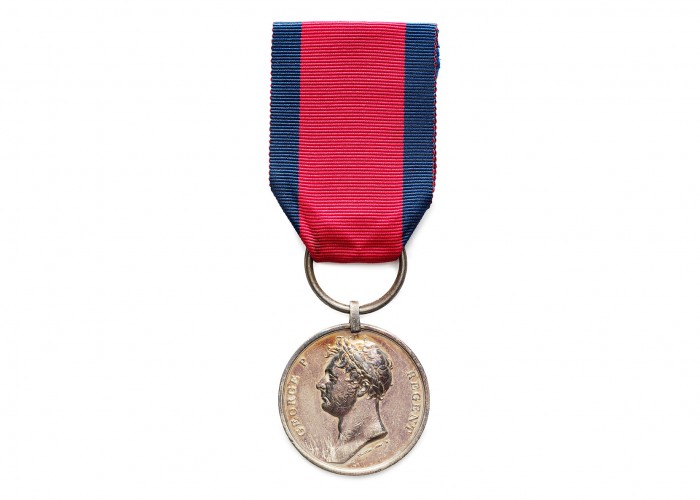Private Soldier’s Waterloo Medal
The Waterloo medal was the first ever “campaign medal” issued by the British Army, given to every soldier regardless of their rank or role. It was awarded to all soldiers present at the Battle of Waterloo and the actions during the two previous days.
Before Waterloo, medals were reserved either for high-ranking officers, or to reward particular acts of bravery. British successes during the Peninsular War in Spain and Portugal were marked by giving British Generals large crosses made from solid gold. The idea of giving common soldiers a medal simply to mark their service was unknown, even bizarre.
Private soldiers were often thought of with contempt by their officers. Even the Duke of Wellington once called his troops “the mere scum of the earth” and claimed most only joined the army “from having got bastard children – some for minor offences – many more for drink”.
The first man in history to award campaign medals was actually Napoleon, who recognised the importance of inspiring loyalty and devotion in his soldiers. He issued medals for all who fought in his invasion of Russia, for instance.
After the Battle of Waterloo, British society was overjoyed at the Allied victory and the final defeat of Napoleon. The soldiers who had fought at Waterloo were seen as heroes, and the idea of giving every soldier a medal quickly became popular.
Each medal had the name of the soldier to whom it was awarded inscribed around the edge, and the words “Waterloo” and “Wellington” on opposite sides. The head is that of the Prince Regent. Some 39,000 medals were issued.
-
Curatorial info
- Originating Museum: National Army Museum
- Accession Number: NAM. 1989-07-79-3
- Production Date: 1816-17
- Material: Silver
-
Use this image
- Rights Holder: National Army Museum. Photography Relic Imaging Ltd.
- License Type: Creative Commons
Find it here
This object is in the collection of National Army Museum









